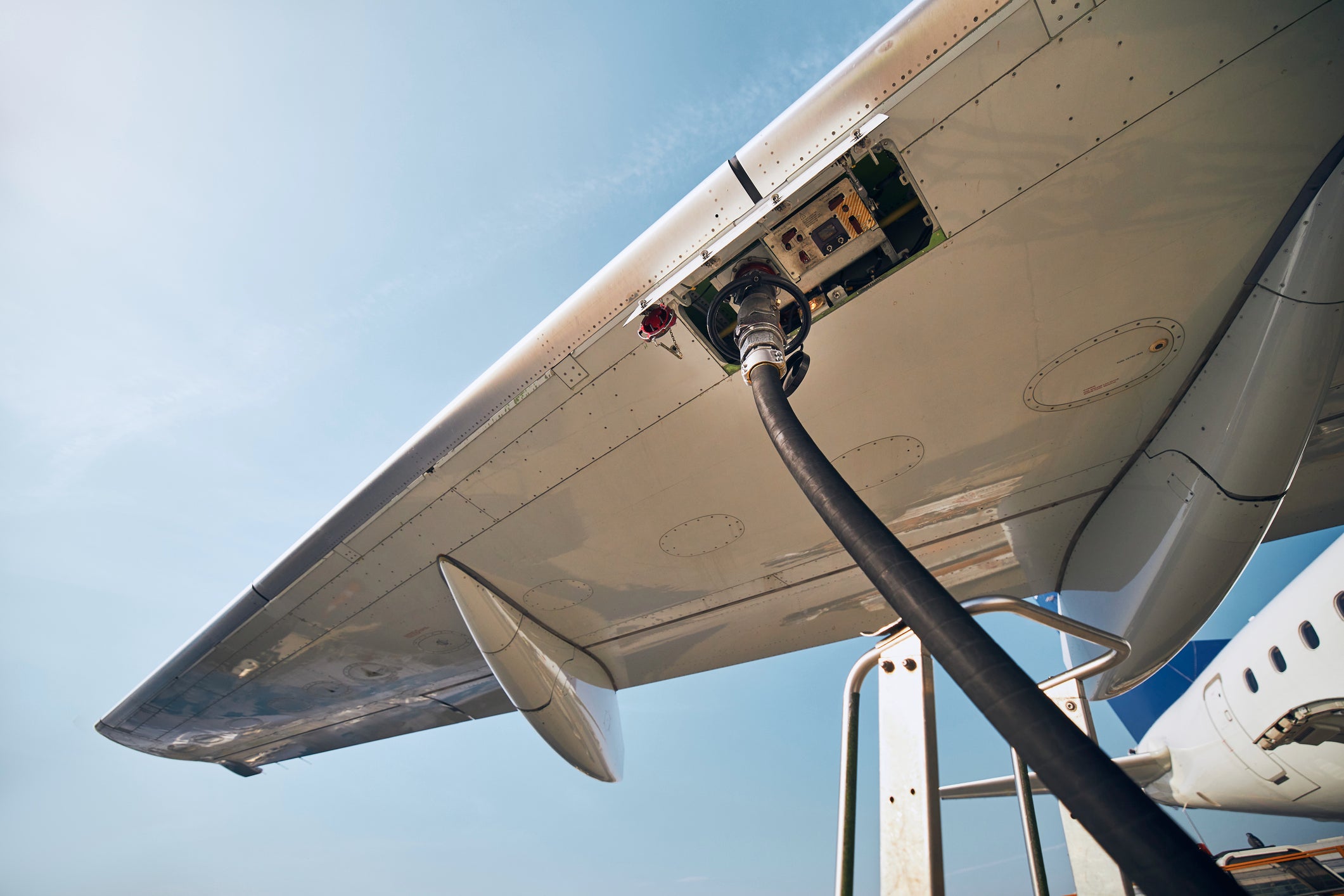Planes being fueled by thin air sounds like science fiction — but in the not-too-distant future it could become science fact.
How? Thanks to a third generation of sustainable aviation fuel (SAF) called e-fuel, or “power to liquid” fuel.
Experts say that the science is actually surprisingly straightforward. The main problem the aviation industry must overcome is cost.
According to the European Union Aviation Safety Agency, e-fuels cost $8,720 per ton, compared to bio-based SAF at $2,365 per ton and conventional jet fuel at $830 per ton.
Conor Madigan, CEO at Aether Fuels, explained that e-fuel is made by converting carbon dioxide (CO2) from the atmosphere or industrial emissions into carbon monoxide (CO) via direct electrolysis or in combination with hydrogen.
The carbon dioxide and hydrogen can then be combined to create various hydrocarbon compounds that can be refined into jet fuel.
Duncan McCourt, CEO of Sustainable Aviation, points out that when burned, it emits the carbon. That means it’s entirely net zero if a renewable energy plant is used to make it. And unlike with bio-feed SAF, feedstock limits and land-use concerns aren’t factors.
The hurdle, Mr McCourt tells The Independent, is “scaling it to commercial levels and doing so at a reasonable cost”.
Mr Madigan explains further, revealing that the cost of e-fuel plants “is high and the scarcity of the kind of hydrogen required under current policies restricts projects to smaller scale operations”.
This, he says, “leads to poor cost efficiency and very high prices to generate acceptable capital returns”.
Mr Madigan continues: “There are only two markets where policies exist to incentivize ‘CO2 plus H2’ fuels, the UK and EU, and they allow the use of only waste hydrogen or green hydrogen.
“Many companies have sought ways to reduce capital expenditure, but most approaches compromise yield in the process.”

Mr Madigan explains that capturing CO2 from the atmosphere is “very energy-intensive and therefore very expensive” but that this problem makes a smaller contribution to the price of the fuel.
So, what’s the solution?
It’s partly in the hands of politicians.
Mr McCourt says: “The cost of the energy required to produce hydrogen and capture carbon at scale is one of the primary challenges.
“Overcoming this will require significant investment and supportive governmental policy.”
And would the aviation industry embrace “thin-air” fuel? It would seem likely, with several carriers already experimenting with alternative ways to power flight.
In 2023, Virgin Atlantic operated a cooking-oil-powered Boeing 787 Dreamliner from Heathrow to New York, and airlines including United, Emirates and British Airways have also used SAF.
